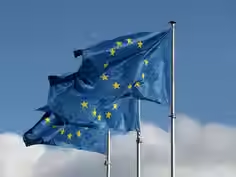18 Million More South Asian Girls at Risk of Anaemia by 2030, Warns WHO-SEARO
- Rahaman Hadisur

- Jul 14, 2025
- 2 min read
Hadisur Rahman, JadeTimes Staff
H. Rahman is a Jadetimes news reporter covering Asia

The World Health Organization South-East Asia Regional Office (WHO-SEARO) has issued a stark warning that 18 million more adolescent girls and women across South Asia could suffer from anaemia by 2030 if urgent and coordinated action is not taken. This would add to the already staggering burden of 259 million cases in the region.
Anaemia, a condition caused by a lack of healthy red blood cells, disproportionately affects women and girls in South Asia hindering education, productivity, and maternal and child health. According to WHO, nearly half of all adolescent girls and women in the region currently live with the condition, making it one of the most pressing and persistent public health and equity challenges.
In a landmark move, governments from seven South Asian countries have come together for the first time to combat this silent crisis. From July 9–11, the “Nourishing South Asia: Reducing Anaemia in Adolescent Girls and Women” regional conference is being hosted in Colombo, Sri Lanka, by SAARC, the Government of Sri Lanka, WHO, UNICEF, and partners.
“This is a clarion call for action. When half of all adolescent girls and women in South Asia are anaemic, it’s not only a health issue, but a signal that systems are failing them,” said Sanjay Wijesekera, UNICEF Regional Director for South Asia.
The conference has brought together over 100 regional policymakers, researchers, health professionals, and development leaders to develop country-specific action plans and launch the South Asia Anaemia Academic Alliance aimed at strengthening scientific leadership and addressing key research gaps.
Sri Lankan Prime Minister Dr. Harini Amarasuriya highlighted the severity of the crisis in her country: “Anaemia affects 18.5% of women of reproductive age and 14.6% of children under five in Sri Lanka. We are intensifying our nutrition programme and expanding efforts nationwide.”
WHO emphasized that anaemia is not merely a health concern, but a deeper reflection of socioeconomic inequities. Factors such as poor nutrition, infections, inadequate healthcare access, and systemic gender disparities all contribute to the crisis. The economic toll is severe: anaemia costs South Asia an estimated $32.5 billion annually. Yet, the potential return is high every $1 invested in maternal anaemia prevention yields $9.50 in economic returns.
Despite little regional progress in the past two decades, some countries are showing promising signs. Nepal, through equity-focused investments and a multi-sectoral nutrition strategy, has reduced anaemia among women of reproductive age by 7% between 2016 and 2022. Projections show this figure could drop to 27% by 2030.
India and Pakistan are also reporting local successes driven by empowered frontline health workers and data-backed strategies, while Bangladesh is linking adolescent nutrition to school and social welfare services.
“Anaemia is both preventable and treatable. We know the causes and we know what works. Now is the time to act boldly, inclusively, and together,” said Saima Wazed, Regional Director of WHO South-East Asia.
The call to action is clear: stronger health systems, trained and supported health workers, better data utilization, and inclusive cross-sector collaboration are critical to ending anaemia in South Asia and unlocking the full potential of millions of women and girls.











































Comments